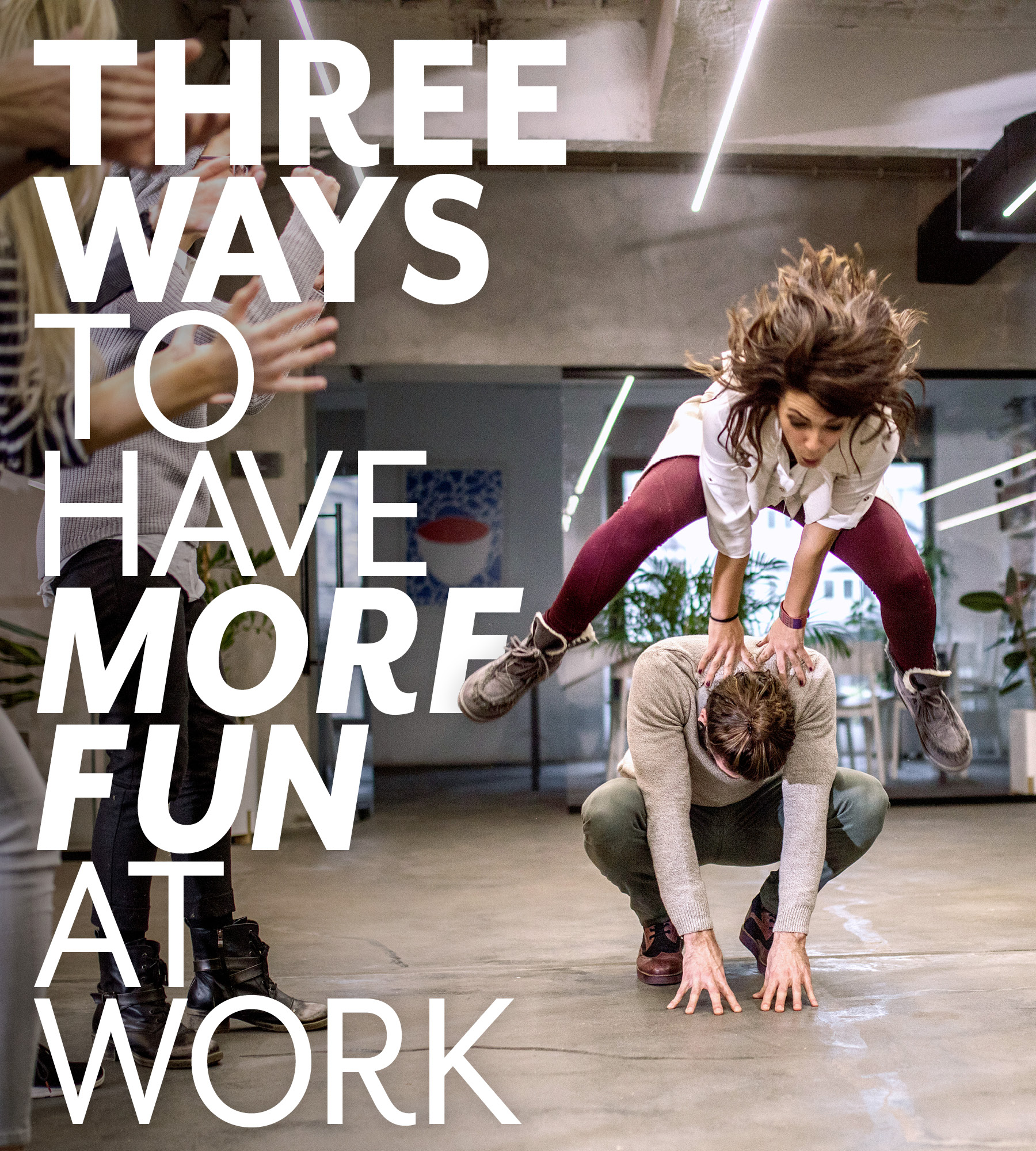Language
You can read the magazine in one of the following languages
When I started my career as a graduate lawyer, I remember how daunting and imposing the building itself was. Adorned in marble with sky high ceilings, I was greeted at the entrance with a statute of people climbing over each other to get to the top. There was no doubt that the implication was that this place meant serious business.
Contrary to conventional wisdom about serious professionalism, marbled floors and pinstripe suits, researchers from the University of Auckland have found that one of the best indicators of a great place to work is fun.

If we’re playful and fun at work, will our people take us seriously? Will they do what we ask of them? Will they continue to get results?
This means that one of the tools you might be missing as a leader is the ability to play. I haven’t yet come across foundations of play in an MBA course.
Of course, fun and play at work should not mean the end of civility, collegiality and respect. It’s possible to enjoy your work and have fun with your colleagues without descending into being offensive, unsupportive or chaotic.
Leaning in to play and fun in leadership requires us to take a contemporary view of what great leadership looks like. While data and leadership experts continue to demonstrate the business benefits of leading people with a focus on psychological safety, autonomy and purpose, many leaders remain concerned about undermining their authority.
If we’re playful and fun at work, will our people take us seriously? Will they do what we ask of them? Will they continue to get results?
Amy Edmonson, the world’s leading expert on psychological safety defines it as: “The belief that one will not be punished or humiliated for speaking up with ideas, questions, concerns or mistakes, and the team is safe for interpersonal risk-taking.”
Psychological safety is not the absence of boundaries or accountability, but it is the presence of trust.

Fun and play are likely to create a culture of meaningful connection where people feel part of a team, committed to a purpose and are driven to achieve for the group.
One of the fastest and most effective ways to build trust is to know each other well. What if, instead of doing trust falls or forced vulnerabilities, we found out about each other, connected with our colleagues and built lasting relationships through fun?
Making work fun doesn’t need to be at the expense of having a productive team. In fact, being clear about roles and goals is an important part of building a psychologically safe culture.
Fun and play are likely to create a culture of meaningful connection where people feel part of a team, committed to a purpose and are driven to achieve for the group. It is the process of creating intrinsic motivation, rather than the extrinsic motivation of being scared of the boss.
Because it’s different to what most of us have been taught about leadership, it, counterintuitively, takes a lot of courage to be the type of leader who encourages play and fun.
Fun and play are not all LEGO challenges and interminable ‘get to know you’ bingo cards, and it’s definitely not workplace hazing, pranks or inappropriate jokes. Here are three ways to lead with play and fun.
I used to think I was pretty boring and lacking in play before I found out about Stuart Brown’s eight play personalities. These cover the collector, the competitor, the creator/artist, the director, the explorer, the joker, the kinesthete and the storyteller.
When I worked out that I had fun by directing people, not only did my childhood make more sense, but I got clearer about what I loved about work. You can build play into your leadership by knowing your play personality and finding out how your team likes to play. It’s easy – you can take a quick quiz here.
Whether you’re working face-to-face, fully remote or hybrid, there’s always a way to set the tone from the top that you value fun and connection. Whether it’s a regular coffee break together, the sharing of memes on a slack chat or a culture of celebrating success, you can help your team in play by not taking yourself or the work too seriously.
Particularly for the competitive among us, think how you can use what we know about gamification to make things more fun in your workplace. The secret to gamifying anything is to celebrate your wins. I’ve seen teams do this in lots of ways.
One leader I knew had a physical ‘appreciation wall’ with photos of each of her team members. They would print off great client feedback and stick on the wall. Leader boards, point systems or Elle Woods infamous ‘snap cup’ (where team members anonymously submit praise to be read out to the team) are all ways to celebrate successes – although keep it light to avoid any battles to the death.

One leader I knew had a physical ‘appreciation wall’ with photos of each of her team members. They would print off great client feedback and stick on the wall.
You can keep an eye on whether you’re using play and fun to your advantage by noticing if people regularly smile, laugh, talk about things other than work and notice things about their colleagues.
So have you had fun today? If not, you know what to do.

Ellen Hooper
Contributor Collective Member
Ellen Hooper is a people and culture expert, an award-winning coach and people leader. She is a certified coach with the International Coaching Federation, an accredited mediator, Co-Host of the ‘I’ll Ask My Sister’ podcast and a passionate speaker and commentator. Ellen’s wisdom has been featured by the ABC, Channel 7, SmartCompany, ‘HR Leader’, ‘The Sydney Morning Herald’ and ‘The West Australian’. For more information visit https://www.ellenhooper.com/
